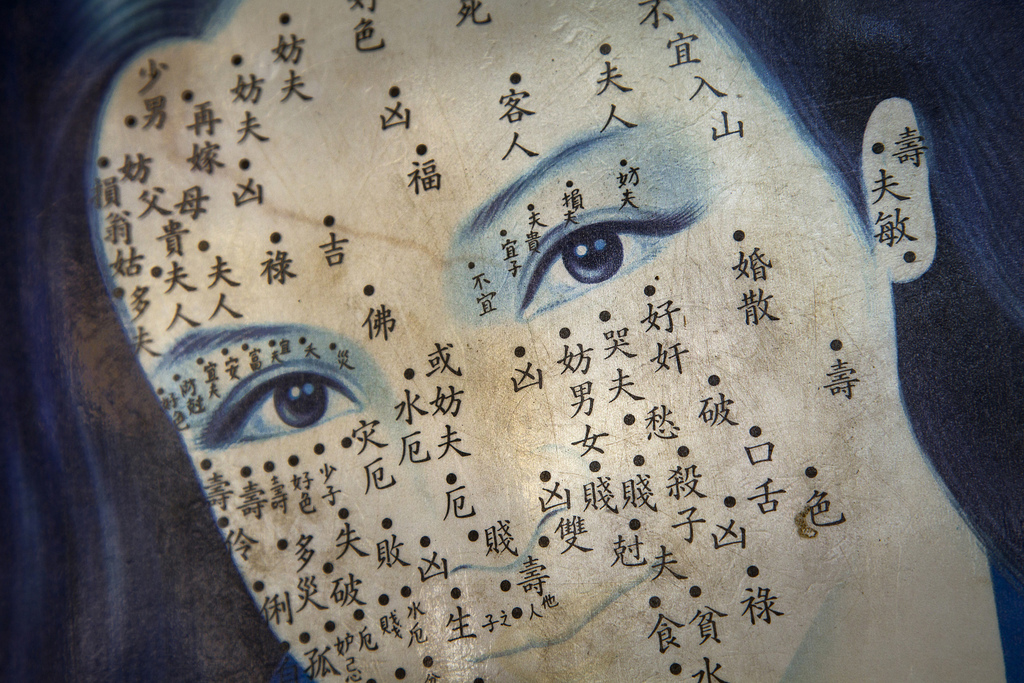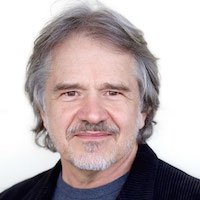The human physiology can be viewed as having two nervous systems.
The first nervous system is well known in the West and involves nerves, the brain, and the spinal cord. The second nervous system is the domain of the East and is known as the human energy system, includes the acupuncture meridians, the muscle meridians, the nadis (similar to acupuncture meridians, but vast in number), and the chakras.
This second nervous system has recently come to the forefront in the West through practices like yoga and acupuncture but unfortunately, it has succumbed to a great deal of mystical fantasy.
In my experience, Chinese doctors’ perspectives on the meridians are far more pragmatic than what is commonly embraced by the West. The same Western mystical garb has shrouded the knowledge of chakras. To clarify the understanding, it may be helpful to refer to chakras as psychophysiological centers—quite simply, different aspects of the psychology relate to different parts of the body. No one ever says, “My elbow is swelling in love.” Of course the heart swells in love, not the elbow. The heart is a physiological center. Many categorical expressions relate to different psychophysiological centers. We’ve all heard someone say, “put your back into it,” “it’s a pain in the neck,” or “I’ve got a gut feeling.”
Over 40 years ago when I was in veterinary school, some Chinese doctors came to the U.S. to give lectures on acupuncture. I entered a large lecture hall packed with medical, dental, and veterinary professors and students. During the presentations, the Western crowd scoffed, chuckled, and mocked the practices of the Chinese doctors. I was embarrassed. They did not realize that acupuncture would come to be widely accepted as a valid form of healing in both the East and West.
20 years later, I had retired from veterinary medicine, but I was still passionate about healing. On a visit with friends in Portland, I was introduced to an overweight truck driver. He complained of being unable to raise his arms over his head for the past year. With my background in the healing arts, I could see what was wrong. I told him a bit about muscle meridians and Iron Shirt Chi Kung, a powerful and ancient form of Kung Fu that aligns the human energy system with the physical body. I offered to help him, warning that the treatment may be painful.
The truck driver accepted my help, albeit with a macho attitude that suggested he didn’t think I could hurt him even if I tried. I felt the tight muscle channels in his arms and shoulders and proceeded to open them through deep tissue work. As I pressed on the muscle meridians, it almost felt like I was pressing toothpaste out of a toothpaste tube. It was actually the muscles that were congested with the energy that was not flowing through them. As the meridians opened you could feel it, as if the toothpaste was stuck, but finally started moving. When it started moving, he could even feel warmth, sort of like warm water flowing down the channels in his arm and down to his hands. It was a feeling that was undeniable, but difficult to describe until you have actually experienced it for yourself. As I continued to work, tears of pain ran down his face. The next day, he walked up to me while waving his arms in the air, like a weightless bird in flight. He was astounded and very grateful.
So, what does all this have to do with yoga?
Yoga means union (wholeness) and it integrates the human energy system with the physical body. Through the practice of a series of postures, the acupuncture and muscle meridian channels throughout the body open. By stretching, tight muscles relax. Toxins in the tissues are flushed out and released, allowing oxygen to more fully permeate the cells of the body. The breath brings oxygen to all the cells in the body. The physiology is brought into a state of greater integration and wholeness.
When the elderly Bob Hope was asked why he looked so young, he responded, “I get a massage every day.” Massage can be used to address many obstructions in the tissues and although few people can afford to get a massage every day, almost everyone, from the very young to the elderly, can achieve similar benefits through yoga. In fact, many of the deeper obstructions in the tissues are better released through yoga postures. For example, the plow posture puts gentle pressure on the abdominal organs, squeezing out stagnant blood and lymph. After coming out of the posture, fresh blood rushes through those tissues, cleansing them. It doesn’t matter if one achieves the full posture or can only get into ten percent of it. The benefits are there for everyone.
A few points of caution regarding yoga:
1. Sometimes in an attempt to get into a posture, muscles that are too tight remain tight. To get into the posture, the individual oversteretches the muscles surrounding the tightness. With proper technique, this overextending is prevented.
I used to work with a woman who could do incredible backbends. However, when I would do bodywork on her, some of the muscles around her lower spine were all tight and knotted up. When the spine is open, that is to say when the energy is flowing properly through all the muscles in the area, there is no congested energy in those muscles. Instead of feeling knotted up, they feel healthy. Healthy does not mean flaccid, it just means nicely toned. Over the past year, she has been working on doing the backbends properly. As a result, those muscles feel healthier and the chronic lower back pain that she had been experiencing is much improved.
2. There is a natural temptation to force the body to stretch beyond its current ability. This can cause damage to the psyche and the nervous system. When I was in India, a Guru mentioned that many yoga practitioners are habitually angry. He said that comes from the pain they experience by forcing the body rather than accepting its limitations.
I think most anybody who has done any stretching, has experienced the trauma of pushing it too hard and trying to get into postures too soon. The muscles feel sore and it can take over a month for them to heal. In fact, over several months, it can be a weak area that you have to be very careful about not retraumatizing. If you just take it easy, you can avoid this problem.
But I have been around yogis who consistently really push it. They can be really moody people. This is particularly true right after a session in which they endured a great deal of pain. Admittedly, I’ve experienced that myself. Your body just feels overtaxed and we feel edgy and impatient.
3. The OM mantra is a delicate subject that some might take offense to. According to the ancient sage Adi Shankara, much of the spiritual Vedic knowledge was lost when people in the world began meditating with recluse mantras like “Om.” This created a conflict in people’s physiologies, as if pushing themselves in two different directions simultaneously (the monastic direction vs. the direction of worldly life). Of course, with so many people today using recluse mantras, this point is usually rejected. (A recluse mantra destroys a person’s affinity for worldly life. In this sense, a recluse solely focuses on the silent depth of their own being.)
There was a lady who had a wonderful family, a great deal of wealth, and a seemingly ideal life. She decided she would start meditating and so she started using the mantra “Om.” Remarkably, over the next years, a number of unfortunate things happened. First her husband passed away, then her children incurred terrible hardships, one of whom even died. She also lost the vast majority of her wealth. Despondent, she bought a plane ticket and went to India to visit a Guru she had heard about as being a truly enlightened man. She told him that ever since she started meditating, her life fell apart.
The Guru asked her, “What mantra were you using?”
She responded, “I was meditating on the mantra Om.”
The Guru said, “Oh that is a recluse mantra. It will give you the Absolute, but it will destroy everything in the relative world.”
The lady cried, “Oh no! This is terrible! Will you give me a different mantra?”
The Guru replied, “Oh, you have nothing left, so just keep using the mantra Om.”
It’s extremely important to use the proper mantra. As the old Chinese proverb goes, “Better to spend a long time looking for the right Master than spending time with the wrong one.” Most everyone is looking for a cookbook, but it doesn’t exist.
In adapting yoga to the West, we need to take care that the more subtle yogic knowledge involving the second nervous system is not lost.
Yoga in its purest sense is a vast and profound field of knowledge, encompassing not only postures, but also diet, meditation and lifestyle. In exploring a personal yoga practice, we open the door to a sublime yet highly elusive art. As we go more deeply into any field, the knowledge becomes increasingly subtle and easily forgotten. Through generations, the deepest understandings of yoga have slowly slipped through humanity’s fingers. This knowledge involves the intimate connection between the muscles of the body and the second nervous system.
A properly stretched muscle is a healthy muscle. When the muscles are healthy, the meridians and nadis of the second nervous system function normally, allowing the energy to flow through them. Yoga then, by making the muscles healthy, makes the second nervous system healthy. As a result, the energy is able to properly flow through the second nervous system (the nadis, meridians, and chakras), supporting the health and life of the entire body, nourishing the cells, tissues, and organs throughout the body.
By viewing yoga as a handful of postures, this essential point to the real value and purpose of yoga might be ignored. That would be a terrible loss.
I encourage you to take advantage of the current movement to revive the profound knowledge of yoga as a path to the integration of the physical body with the second nervous system.
~
Relephant:
In Defense of Natural Yoga
Relephant bonus:
~
Author: Michael Mamas
Editor: Katarina Tavčar
Photo: Tomás Fano/Flickr












Read 26 comments and reply